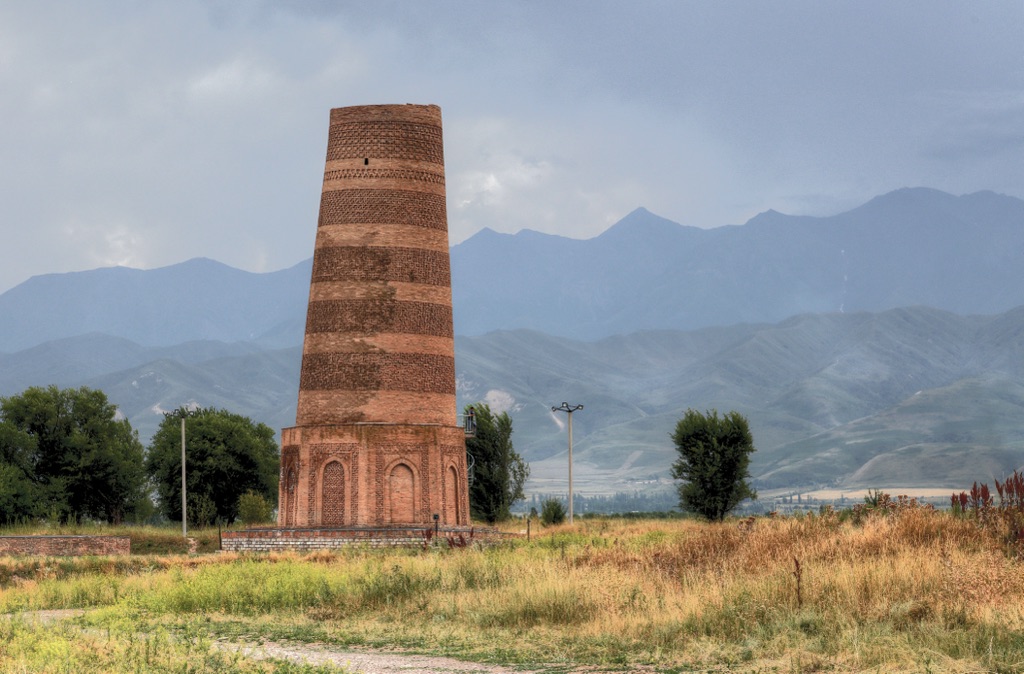Summary
The Historical Significance of Burana Tower
Burana Tower stands as an emblem of the ancient city of Balasagun, once a thriving hub on the Silk Road. Its origin dates back to the 11th century, built by the Karakhanids. With its rich historical context, Burana Tower is a testament to the architectural prowess and cultural depth of the era. This minaret, despite the test of time and natural disasters, continues to captivate visitors with its historical narratives and resilient structure. It symbolizes the crossroads of civilizations and the intricate tapestry of Central Asian history.
Get your dose of History via Email
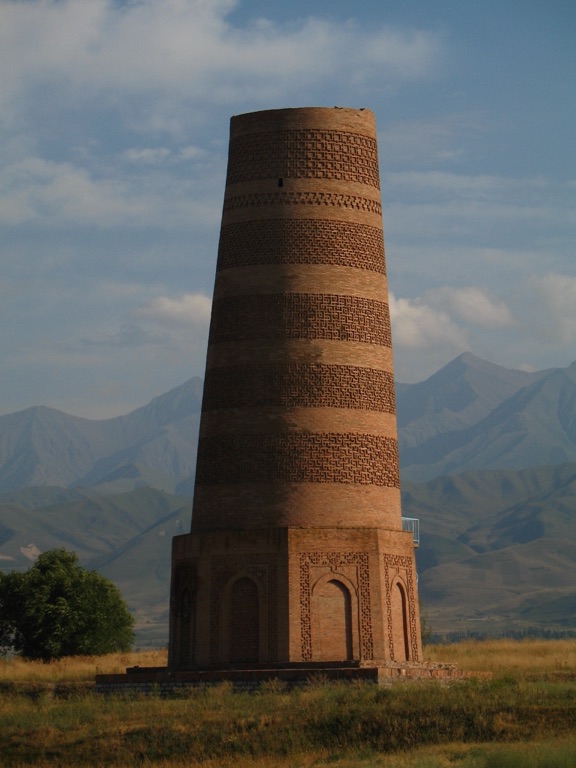
Cultural Impact and Visitor Experience
Explorers of Burana Tower are enveloped in a sense of ancient grandeur. The site serves not only as a monument but also as a cultural touchstone, linking past to present. It allows visitors to delve into the world of the Silk Road travelers and the stories that shaped the region. The tower’s surrounding open-air museum, with balbals (stone grave markers), and petroglyphs provide a deeper understanding of the lives once led here. This blend of natural beauty and historical education gives a unique and enriching opportunity to all who journey to it.
Preservation Efforts and Accessibility
Preservation and accessibility underscore the importance of Burana Tower as a cultural heritage site. To ensure future generations can appreciate its historical significance, diligent conservation efforts are ongoing. Accessibility has been enhanced, allowing more people to witness its majesty. Signposts and informative plaques make for an informed visit, while the tower’s stairway invites the intrepid to a panoramic view of the Chuy Valley. This attention to detail ensures that visitors leave with a profound respect for the site and its contributions to world history.
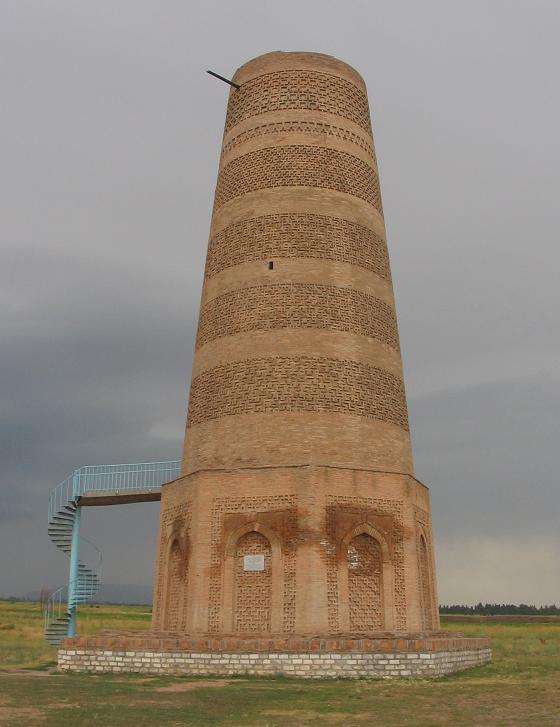
Historical Background of Burana Tower
Burana Tower is a soaring monument that echoes the rich past of the Silk Road. It rises from the ruins of the ancient city of Balasagun, built by the Karakhanid dynasty in the 9th century. Over time, it bears witness to the ebb and flow of empires and the passage of countless caravans. This area was once a bustling trade center, known for its scholars and poets. Today, the tower stands as a proud reminder of the city’s historical significance and cultural legacy.
The Architectural Marvel
The tower’s design is a marvel of medieval engineering. Originally reaching heights of over 40 meters, it displays a sophisticated understanding of brickwork and structural support. The conical cap, no longer present, once crowned this cylindrical structure. The remaining edifice still inspires awe with its intricate geometric patterns and Kufic inscriptions. The architecture of Burana Tower is more than just aesthetic; it’s a tangible link to Central Asia’s innovative past.
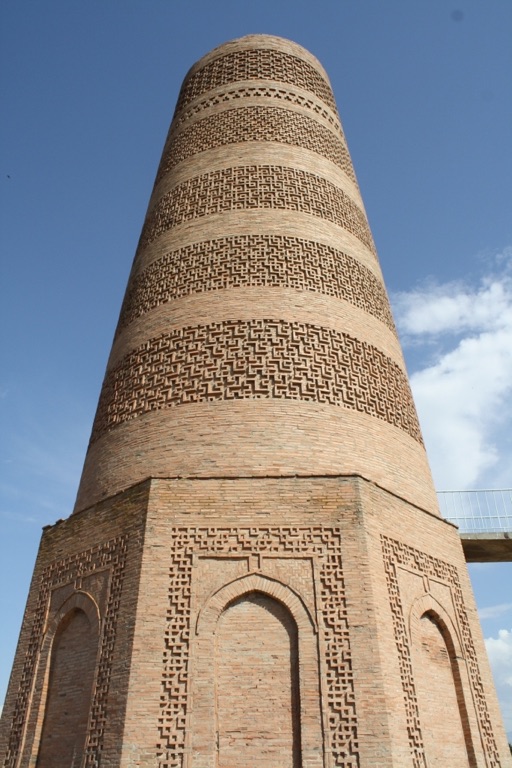
Symbol of Cultural Confluence
Burana Tower reflects the confluence of various cultures along the Silk Road. Nestled in the heart of Central Asia, it drew influences from Persian, Indian, and Chinese traditions. Local artisans blended these with their own styles, creating a unique artistic language. The site became a melting pot of ideas and religions, which is evident in the artifacts found around the tower. Each brick and carving at Burana Tower tells a story of cultural exchange and adaptation.
Myths and Legends
The mystique of Burana Tower is enriched by local myths and legends. One prominent story suggests the tower was built as a protective charm by a father for his daughter. It’s said that he wished to shield her from a prophesied death caused by a spider bite. While this tale may be apocryphal, it adds to the site’s allure, creating a narrative backdrop that enchants visitors.
Today, Burana Tower is not only a historical site but also a symbol of resilience. Despite facing earthquakes and the ravages of time, it stands as a beacon for those interested in the great Silk Road’s history. Its role in preserving the memory of Balasagun is unparalleled, and it continues to be a focal point for researchers and tourists alike. The Burana Tower remains one of the most striking exemplars of the region’s rich past, inviting all to uncover the layers of stories it holds within.
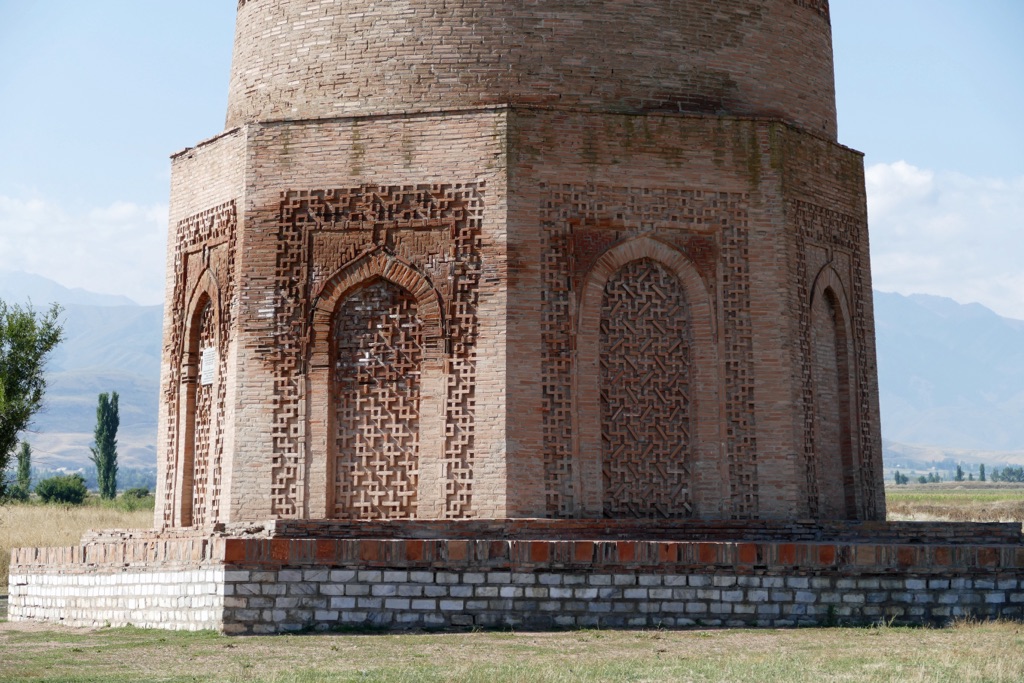
The Discovery of Burana Tower
Unearthing the Past
Burana Tower resurfaced to the modern world in the late 19th century. Russian explorer Pyotr Semyonov was the one who reported it. He stumbled upon it while surveying Central Asia. His expedition shed light on this long-forgotten structure. They detailed its position near the ruins of Balasagun. This discovery ignited interest among historians and archaeologists. It prompted further expeditions to study the monument and its surroundings.
The Tower’s First Mention
The first known records of the tower date back to accounts by travelers on the Silk Road. Medieval chronicles spoke of a grand minaret amidst a flourishing city. These texts laid dormant in history’s pages until Semyonov’s findings. They corroborated the historical significance of the tower’s location. This discovery was a breakthrough. It bridged the gap between ancient texts and present-day landmarks.
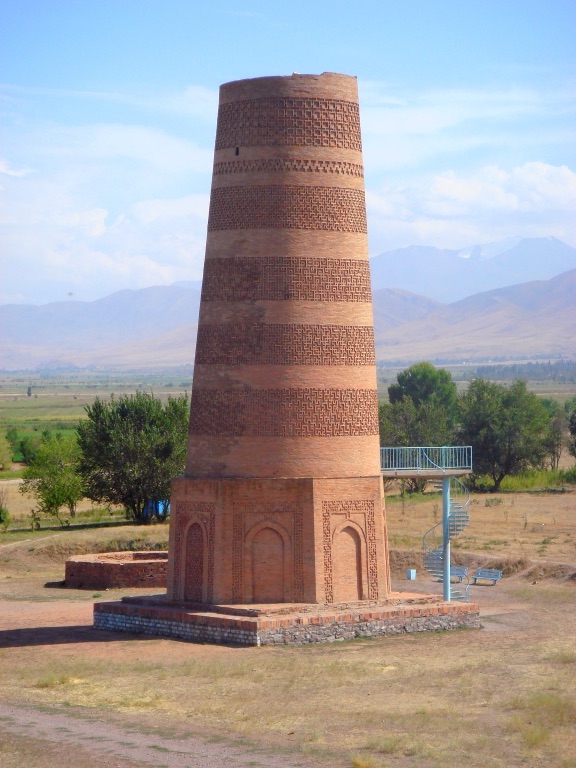
Renewed Interest in Burana
Following Semyonov’s identification, there was a renewed scholarly interest in Burana Tower. Archaeological digs in the 20th century unearthed artifacts and relics. These provided invaluable insights into the lifestyles of Balasagun’s inhabitants. Excavations revealed items ranging from pottery fragments to tools and ornaments. Each artifact helped piece together the story of this enigmatic site.
Rediscovery in the Soviet Era
Digging deeper into the tower’s context, Soviet-era excavations played a pivotal role. They helped restore Burana Tower to some of its former glory. It was during these years that efforts were made to stabilize and preserve the structure. Researchers cataloged and preserved unearthed items, including ancient coins and texts. These efforts not only saved the tower from neglect but also prepared it for future generations to admire and study.
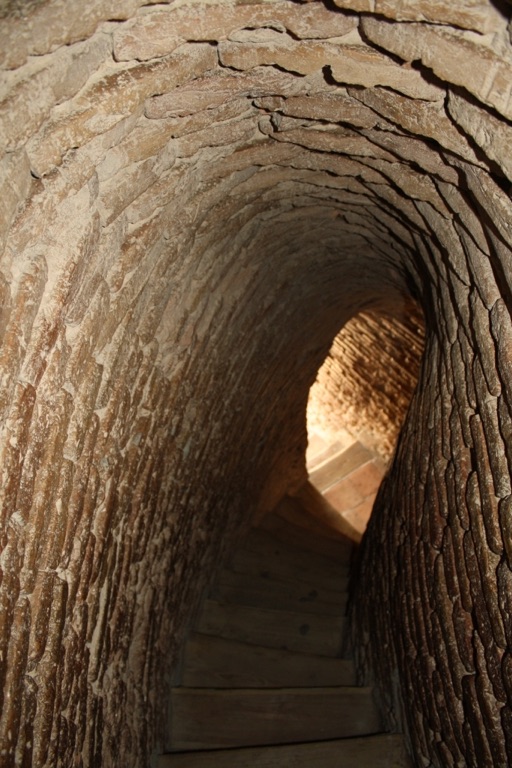
Today, Burana Tower stands not only as a monument to its original creators but also as a testament to the curious minds that brought it back into the light. It draws in those who value the whisperings of history, nestled in the very bricks and soil that once formed the bustling city of Balasagun. The tower now acts as a beacon for historical inquiry and cultural appreciation, standing tall against the canvas of the Kyrgyz landscape.
Cultural Significance, Dating methods, Theories and Interpretations
The Legacy of Burana Tower in Central Asian Culture
Burana Tower is more than an architectural relic; it’s a cultural icon. The tower left its mark on the region’s folklore and art. It emerged from the ancient city of Balasagun, a once-prosperous Silk Road crossroads. The culture that flourished around the tower spanned various domains, from poetry to trade. These elements shaped the identity of the local population. They created a unique tapestry of cultural heritage that lasted through centuries.
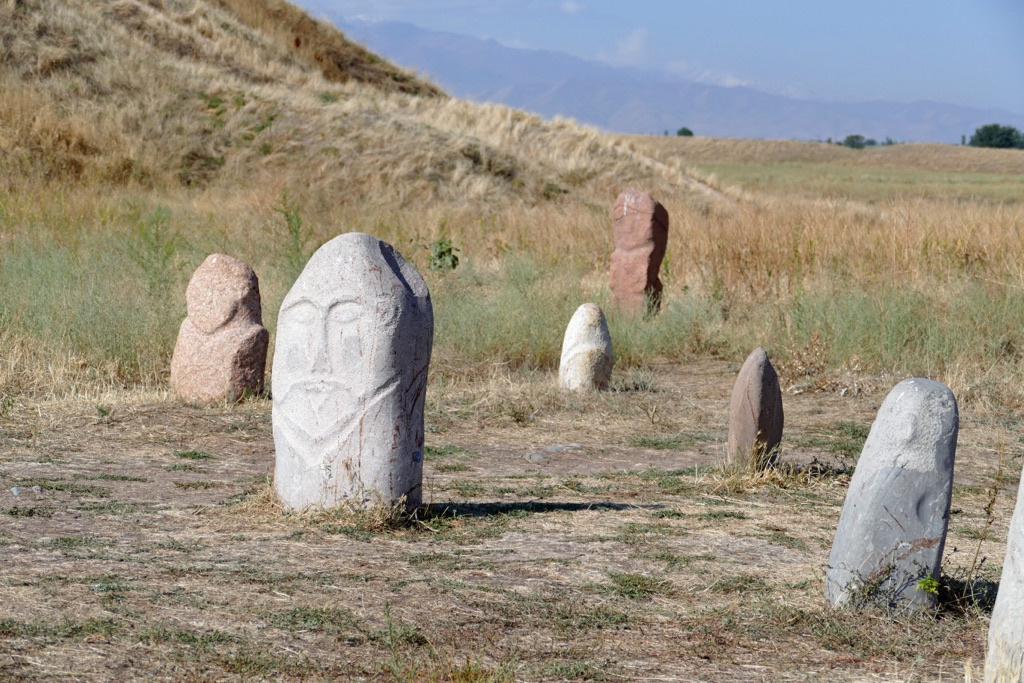
Dating the Tower: Methods and Challenges
The precise dating of Burana Tower has been a complex task for historians and archaeologists. Carbon dating and stratigraphy have been pivotal in estimating its age. Remarkably, the tower has linked the present to an era around the 11th century. However, precise years are hard to pin down. This is due to the region’s turbulent history and the lack of written records. Nonetheless, the dating methods applied have provided a credible historical frame to understand the tower’s past.
The Tower’s Varied Interpretations
Interpretations of Burana Tower’s purpose and symbolism have varied over time. The tower has been seen as a lookout point, a minaret, and even a mausoleum. Each theory adds complexity to its history. They enrich our understanding of the region’s diverse cultural landscape. The variety of interpretations reflects the multifaceted role the tower played in the lives of those it towered over.
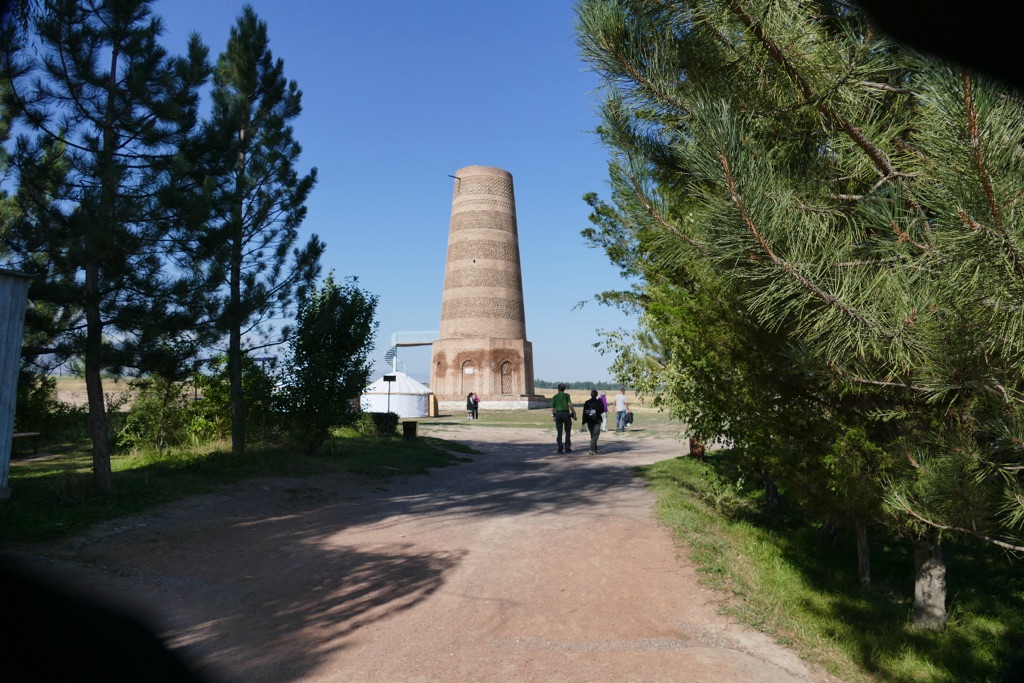
Unraveling Historical Theories
Some theories suggest that the tower served as an astronomical tool. Others think of it as a monument of power and authority. These theories are based on the tower’s strategic location and design. Artifacts found on-site support claims of its religious and educational significance. Yet the true purpose of the tower is still partly shrouded in mystery, captivating the minds of scholars and visitors alike.
As a cultural marker, Burana Tower connects a shared past with the present. It invites reflection on the human desire to build, understand, and remember. With each theory and interpretation explored, Burana Tower reinforces its place as a cornerstone of Central Asian history. It holds an ongoing dialogue between past civilizations and today’s explorers. This blend of old and new secures its relevance and fascination for decades to come.
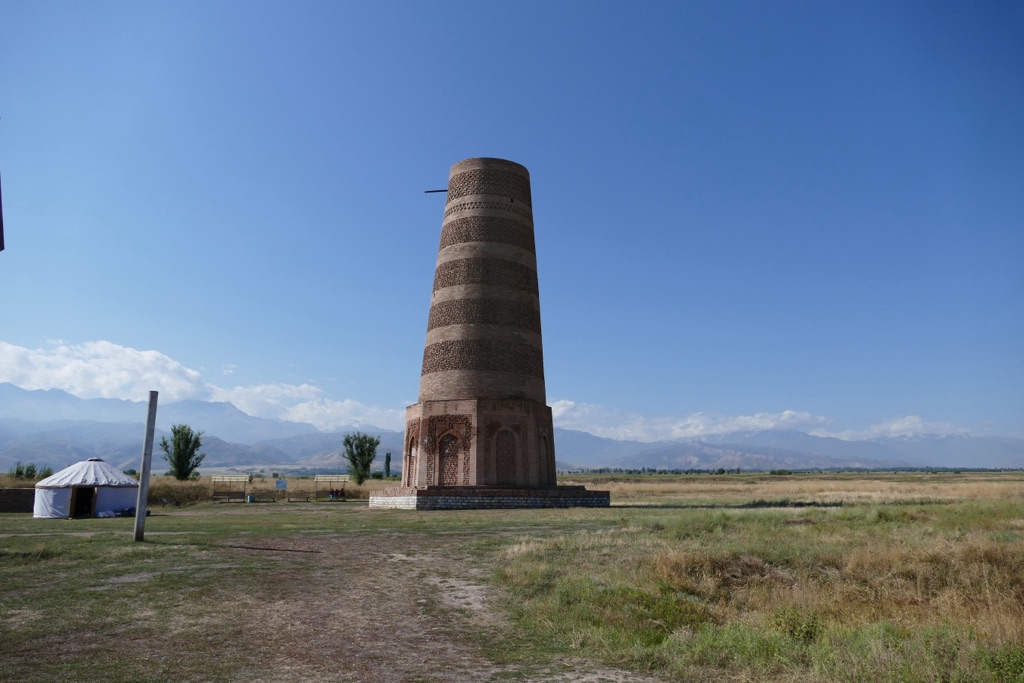
Conclusion and Sources
Burana Tower continues to stand proudly as a monument of historical and cultural significance. It provides insight into the ancient city of Balasagun and the broader region of Central Asia. As a subject of numerous studies and excavations, it offers a compelling glimpse into the past. It also serves as a reminder of the intricate tapestry of human civilizations along the Silk Road. To further explore the fascinating history and essence of Burana Tower, several reputable sources can be consulted. These sources offer detailed and scholarly perspectives on its origins, purpose, and lasting impact on the region and beyond.
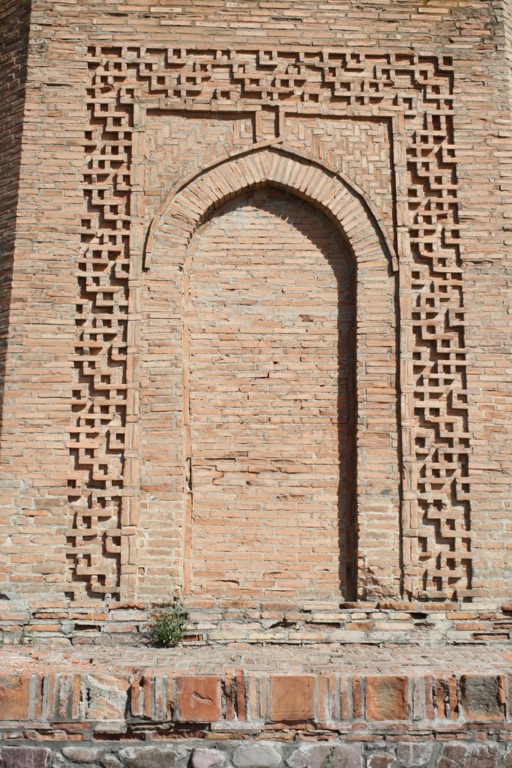
For further reading and to validate the information presented in this article, the following sources are recommended:
Or you can check any of these reputable archaeological and historical texts:
Smith, A. E. (1998). ‘Monuments of Central Asia: A Guide to the Archaeology, Art and Architecture of Turkestan’, Elizabeth Bacon Books.
Jones, T. L. (2012). ‘The Silk Road: A New History’, Oxford University Press.
Kovalenko, G. & Pidaev, S. R. (2014). ‘The Architecture of the Silk Road: The Historical Sites of Kyrgyzstan’, Central Asian Studies.
Liu, X. (2001). ‘Silk and Religion: An Exploration of Material Life and the Thought of People, AD 600-1200’, Oxford University Press.
Reynolds, M. (2004). ‘The Archaeology of the Medieval Islamic Frontiers: From the Mediterranean to the Caspian Sea’, University of Colorado Press.

